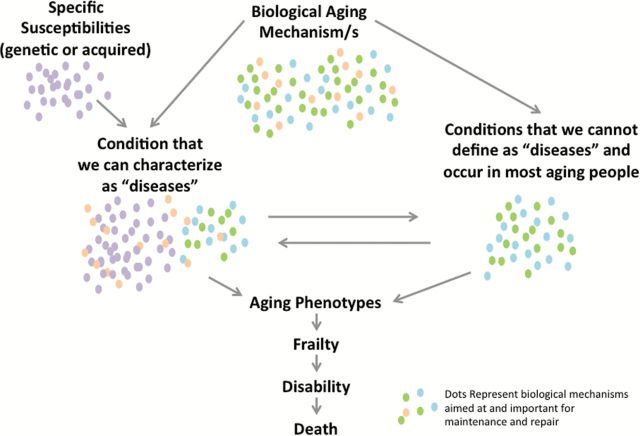Figure 4.
Mitochondria as a key regulator in the pathophysiology of aging or in the earlier stages of some events that may lead to the aging phenotype. Even minor mitochondrial dysfunction when coupled with specific organ susceptibility may cause diseases, such as atherosclerosis, and also conditions that we still do not recognize as diseases, such as arterial stiffness or sarcopenia. The difference between the so-called “diseases” and these age-related conditions resides in our ignorance. What is clear is that some disease may sometime accelerate mitochondrial function decline and create a vicious cycle that leads to frailty and disability. For example, atherosclerosis of the femoral arteries may cause irreversible mitochondrial dysfunction in the leg muscle, further accelerating sarcopenia. If this hypothesis is correct, for example, early revascularization or treatment that protect mitocondrial integrity may substantial change the prognosis and clinical evolution of peripheral arterial disease. Indeed, integrating traditional pathophysiology and mitochondrial biology may increase our understanding of disease and help identify new therapeutic targets.

